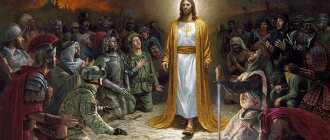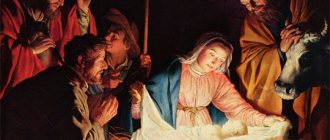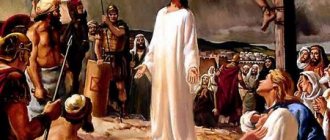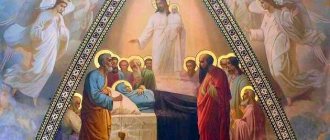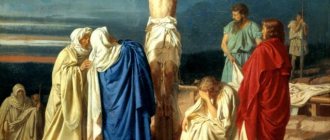Bible Questions and Answers
Published 01/10/2018
Is it true that Jesus Christ was married, as some say? Is this true or is this all just another fabrication of atheists? Is a newly discovered manuscript real proof that Jesus Christ was married? What does the Bible say about this?
Answer:
I'll have to look at some research to confirm the age of the find and other versions of the translation, but let me give my first quick impressions. I would say that at first glance this is probably a Gnostic letter from the fourth century, which might even claim that Jesus Christ was married (although there may be other Coptic interpretations).
Many Gnostic documents appear in the world, such as the Gospel of Thomas, the Gospel of Judas, the Gospel of Mary and many others. These documents make some truly outrageous claims about what Jesus allegedly said and did, including that Jesus Christ was married. They make false attempts to force Gnostic ideas into the mouth of Jesus Christ and should be regarded as blatant fabrications created to support a non-Christian faith.
For example, in the Gospel of Judas, Jesus seems to be telling Judas that he is the most spiritual of the apostles because he has the greatest access to deep, hidden knowledge that Jesus did not share with the other apostles.
Gnostic False Claims About Jesus Christ
In the Gospel of Judas, Jesus tells Judas that he did Him a favor by letting Him be killed so that He could give up the body because He was trapped. In the Gospel of Judas, the God of the Old Testament is an evil God. However, this is not all of the shocking stories that can be found in other fictitious Gnostic writings that are put into the mouth of Jesus and apparently were never told by Him. The fact that some Gnostics have created a false claim that Jesus Christ was married is nothing new. This was the premise of the popular book and movie The Da Vinci Code, which came out about ten years ago. This document obviously does not prove that Jesus Christ was married. But this is evidence that some heretical groups have made such statements.
Is your find real? It depends on what you mean by reality. If you mean "real" in the sense that there is a fourth-century Coptic document that can be interpreted as saying that Jesus Christ was married, then my answer is "Yes, probably." Is it “real” that the majority of the church believed or even considered the possibility that this could actually be the case? The answer to this question is a resounding “no.”
This document is of interest to students of the history of Christianity and the heretical groups that arose from the church, but it is of no interest to those who want to know what Jesus Christ said and did.
Genealogy of Jesus Christ (+VIDEO)
The Pravoslavie.ru portal begins a new series of conversations - on the Gospel of Matthew. The purpose of this cycle is to explain the symbolism of the Gospel text and introduce it to its theological interpretation. The first conversation is devoted to the genealogy of the Lord Jesus Christ, which reveals both the Gospel of Matthew and the entire New Testament. What is the point of this rather impressive list of names? Why are the names of four women in this list, and not righteous women at all? How is the division of the genealogy into three groups explained, and why does the last one have not 14, but 13 names?
Why is it said about the earthly ancestors of the Son of God?
“Genealogy of Jesus Christ, the Son of David, the Son of Abraham” (Matthew 1:1).
With these words begins the entire set of books of the New Testament.
Why is it said at the beginning of the Gospel about “genealogy,” if the prophet Isaiah said about Christ: “Who will explain His generation” (Is. 53: 8)?
Blessed Jerome explains: “Let us not think that the evangelist contradicts the prophet in the sense that the evangelist begins to expound what, according to the prophet, is impossible to expound; because the first, the prophet, speaks of birth according to the Divine, and the second, the evangelist, speaks of the incarnation (that is, birth according to the flesh - Archpriest O.S.). And he began from the carnal side so that through man we could begin to talk about God.”
And the Monk John of Damascus wrote: “The temporary birth by which Christ was born for the sake of our salvation, having become a Man from a Woman and being born at the usual time after conception, was natural, but what was supernatural was that He was born not from a seed, but from the Holy Spirit and from The Holy Virgin Mary is above the law of conception."
God becomes a Man in order to bring us closer to our own Divinity in His True Humanity, teaching us true human life.
The True Humanity of Jesus Christ sanctifies our earthly life in a special way. Sometimes we are too lenient about this temporary life. But it is precisely this that determines our eternal future and only therefore plays a decisive role in our destiny.
Earthly life is valuable – also because only in it are we honored with Holy Communion
The value of this earthly life is also due to the fact that only in it we are honored with Holy Communion. Communion itself (Eucharist) will be carried out only until the Second Coming of Christ. It is said: “For as often as you eat this bread and drink this cup, you proclaim the death of the Lord until He comes” (1 Cor. 11:26). The words “until He comes” mean the cessation of the Sacrament of the Eucharist with the coming of Christ the Savior to this world. Only then, in Eternity, will we be able to appreciate what we have now on earth. We will remember with touching sadness and delight every Divine Liturgy in which we took part while still living here on earth. Angels, for example, do not receive communion, although they serve at every Eucharist (Liturgy). Truly, we should not neglect the spiritual values of this earthly existence. Here is our spiritual homeland. Being born again is possible only in this earthly temporary life. And everything that happens here - today and now - has an eternal and enduring meaning and purpose. The True Humanity of Christ helps us in this earthly and temporary life to join His True Divinity in Eternity. That is why it is said by Jerome the Blessed: “And he began from the carnal side so that through man we would begin to talk about God.”
Let me also recall the words of the Hieromartyr Clement of Rome: “So, let us repent while we live on earth, for we are clay in the hand of the artist. Just as a potter, when he makes a vessel and it becomes bent or falls apart in his hands, can restore it again, but when he hastens to put it in a burning furnace, then it will no longer help him, so we, while we still live in this world, must repent with all our hearts in the evil that we have done in the flesh in order to receive salvation from the Lord while we have time to repent. For after our departure from the world we can no longer confess or repent there.”i.
And Saint Cyprian of Carthage instructs: “Take care, while you can, of your safety and life... We convince you, while there is still an opportunity, while there are still a few centuries left, to bring satisfaction to God... When the exodus comes from here, there will be no place for repentance, no real satisfaction. Here life is lost or saved. Here eternal salvation is secured by worshiping God and works of faith. And let no one be delayed on the path to salvation by sins or summer. For those who still live in this world, no repentance is too late. The entrance to God's condescension is open, and access is convenient for those who seek and understand the truth. Pray for sins, at least at the end and outcome of temporary life... Divine love provides saving condescension to the believer, and in death itself the transition to immortality takes place.”ii.
These words of Saint Cyprian that life is lost or gained here emphasize the importance of earthly life, which Christ teaches us in His incarnation. “For to this you were called, because Christ also suffered for us, leaving us an example, that we should follow in His steps” (1 Pet. 2:21).
"Son of Abraham" and "Son of David"
Manuel Panselin. Apostle and Evangelist Matthew. Fresco of the Protata Cathedral in Kareia (Athos)
The Gospel of Matthew was written for Jews, and was originally written in Aramaic (“Syriac”). All Jews were descended from Abraham, so it was important to emphasize that Jesus was from the House of David. Jews would not recognize a Messiah who did not come from David and Abraham. The Jews also knew that the true Messiah (Christ) was to be born in the very city where King David was born (see: Matt. 2:6).
Christ is the “son” of David and Abraham only by carnal descent. But there is also a hidden, spiritual meaning in these words: “son of David”, “son of Abraham”.
Abraham's son Isaac was sacrificed - just as Jesus Christ was sacrificed by His Father
The actual son of David, Solomon, built the world's first Temple dedicated to God, and Christ, in His Body, created the TEMPLE of the Church of God; Abraham's actual son Isaac was sacrificed to God, but God Himself stopped this act. And the Son of God, Jesus Christ, was sacrificed in exactly the same way, and also by His Father, as it is said: “For God so loved the world that he gave his only begotten Son, that whoever believes in him should not perish but have eternal life” ( John 3:16).
On the other hand, the very word “Christ” (Heb. Mashiach) means, according to the interpretation of Blessed Theophylact, both “king” and “high priest” - bishop. The great king of the Jews was King David, and the great patriarch-high priest was Abraham. But the royal dignity of Christ is higher than any human royal dignity. It is said: “Who is this King of glory? “The Lord is mighty and strong, the Lord is mighty in battle” (Ps. 23:8); and again: “for the Lord is a great God and a great King over all gods” (Ps. 95:3). Christ was both a true prophet and a true high priest - for, as the Divine Word Himself, He announced the future and administered judgment. It is said: “But the Lord is in His holy temple: let all the earth be silent before Him!” (Hab. 2:20).
What is "genealogy"?
Tree of Jesse
In answer to the question of why the Gospel begins with “genalogy,” it should be noted that the Greek word geneseos itself, translated as “genealogy,” more means “origin” and “gradual emergence.” In other words, Christ did not come to this world for the first time; He had previously demonstrated His Divine presence here in many different ways.
First: He is the Son of God and created this world. It is said: “For by Him were all things created, that are in heaven and that are in earth, visible and invisible, whether thrones, or dominions, or principalities, or powers—all things were created by Him and for Him” (Col. 1:16).
Second: it was His word that created the Divine Revelation of the books of the Old Testament. It is said: “Concerning this salvation were the searches and investigations of the prophets, who foretold the grace appointed for you, searching to what and at what time the Spirit of Christ who was in them pointed out...” (1 Pet. 1: 10-11).
Third: He is the Savior of the world promised in Paradise. It was said about Him: “And I will put enmity between you and the woman, and between your seed and her seed; it will bruise your head, and you will bruise its heel” (Gen. 3:15).
Blessed Theophylact wrote: “The name Jesus is not Greek, but Hebrew and means: Savior, for “yao” among the Jews means “salvation.”
The Explanatory Orthodox Bible says about the word genesis (“genealogy”): “In general, it denotes a relatively slow birth, more the process of birth than the act itself, and the word implies origin, growth and final emergence into the world.”iii. Most accurately, this process of the appearance of Christ the Savior into the world is conveyed by the following prophecy from the Pentateuch of Moses: “I see Him, but now not yet; I see Him, but not close. A star rises out of Jacob, and a rod rises out of Israel, and smites the princes of Moab, and crushes all the sons of Seth” (Num. 24:17).
But first of all, Jesus Christ is Lord and God!
As the Apostle Thomas once exclaimed: “My Lord and my God!” (John 20:28).
Thomas's assurance. Icon. Ohrid, Church of St. Clement, XIV century.
Law and Grace
As we see, in the prophecies of the Bible there is a hidden mysterious meaning that does not lie on the surface of the narrative and is revealed only to a thoughtful reader. However, the Monk Ambrose of Optina taught: “I advise you to read the Gospel more often and for a long time... Read so that only your ears can hear: you understand - you don’t understand, read. The gracious word of the Gospel greatly drives away boredom and despondency and will calm you down, just read more and longer.”iv.
After such important words about the significance of the Gospel, the very sound of the New Testament gospel, let us return to the actual meaning of this word - the Gospel - as good and joyful news. What is the goodness and joy of this message of the New Testament? And how is it fundamentally different from the message sent down in the Old Testament?
The Old Testament is a teaching about the Law, or good works. The New Testament is a teaching about grace and forgiveness. It is said: “For the law was given through Moses; But grace and truth came through Jesus Christ” (John 1:17). The New Testament says about the Law: “For by the works of the Law will no flesh be justified in His sight; for by the law is the knowledge of sin” (Rom. 3:20). In other words, we are all violators of the Law, and the main thing it shows us is our actual sinful state. In the Epistle of the Apostle James, the Law is directly called a mirror. It is said: “For whoever hears the word and does not do it is like a man looking at the natural features of his face in a mirror” (James 1:23). The law accuses us and makes sin more sinful, as the Apostle Paul said: “Has what is good become deadly to me? No way; but sin, which turns out to be sin because through good it causes death to me, so that sin becomes extremely sinful through the commandment” (Rom. 7:13).
Christ saves us not for the sake of our possible thanksgiving, but solely out of His mercy
The gospel is the good news that “...now, apart from the law, the righteousness of God has been revealed, to which the law and the prophets testify, even the righteousness of God through faith in Jesus Christ to all and on all who believe” (Rom. 3:21-22 ). In other words, only those who completely fulfilled it could live by the Law (such people practically did not exist), but everyone who believed in Christ could live by the Gospel (that is, by Grace ). As it is said: “There is now therefore no condemnation for those who are in Christ Jesus, who do not walk according to the flesh, but according to the Spirit” (Rom. 8:1). Moreover, we must always remember that the Son of God saved us and not for the sake of the religious life that we lead now. In fact, our life - I mean business - has remained the same. It is said: “He saved us, not by works of righteousness which we had done, but according to His mercy, by the washing of regeneration and renewing of the Holy Spirit” (Titus 3:5). We can say that He saved us completely without reason, not for the sake of our possible thanksgiving, but solely out of His mercy and goodness. “I, I Myself, blot out your transgressions for My own sake, and I will not remember your sins” (Is. 43:25).
Could we ourselves deserve, earn, or delight in salvation? It is said about the apostles: “They were extremely amazed and said to each other: who can be saved? Jesus, looking at them, said: “This is impossible with men, but not with God, for all things are possible with God” (Mark 10: 26–27). “Looking at them,” that is, at the apostles, the Lord speaks of salvation: “This is impossible for men,” and does anyone really think that, looking at him, the Lord will be able to say something different? All of us, by our deeds, deserve eternal death, and in this sense, there are no better or worse among us - but in Christ we receive forgiveness and partake of the glory of the Heavenly Kingdom of God. And all this is free, by grace. It is said: “Being justified freely by His grace through the redemption that is in Christ Jesus, whom God set forth as a propitiation by His blood through faith, to demonstrate His righteousness in the forgiveness of sins previously committed” (Rom. 3:24-25).
So, our previous sins are forgiven us. What was impossible for ourselves turned out to be absolutely possible for God (as we read: “with men this is impossible, but not with God, for all things are possible with God”). We do not save ourselves, but are saved by Christ the Savior. Mastering this truth means comprehending the main meaning of the Gospel - the meaning of the Good News.
Three stages of salvation
Vision of the Ladder by St. John Climacus. Miniature from “The Ladder and Parenesis of St. Ephraim
But with all this, we Orthodox believe that
salvation is the work of a person’s entire life.
In the Orthodox understanding, human salvation consists of three steps: redemption, sanctification, deification . These stages of spiritual growth correspond to three different virtues: faith, hope, love. And also three different states of man in relation to God: slave, mercenary, son.
Let's look at these three steps in detail.
The first step is redemption. Redemption is carried out by the Blood of the Lamb of God - the Blood of the Lord Jesus Christ. The Bible says that after the fall of our first parents, the Lord made them clothing of skins (see: Gen. 3:21). According to the interpretation of the holy fathers, this means that then the first blood sacrifice was made, the first sacrificial blood was shed, which prefigured the future redemption of mankind by the Blood of the Son of God. And people dressed in the leather skins of sacrificed animals as a sign of a constant reminder, first of all, of the coming sacrifice. The stage of redemption corresponds to the biblical virtue of faith. “And without faith it is impossible to please God; for he who comes to God must believe that He exists” (Heb. 11:6), as the Scripture says.
And this level corresponds, in turn, to the “social” position described in the Bible - slave. The slave does not hope for reward. A sinner who comes to God hopes only for mercy. It can be said that the entire Protestant world in its thinking stopped only at this level, although the Protestants did not really even rise to this level, but only moved even further away from the mystery of redemption.
The second stage is sanctification. The Bible says, “For this is the will of God, your sanctification” (1 Thess. 4:3). This level corresponds to another biblical virtue - hope. A person not only believes, he hopes, he relies on the fruits of his faith, that faith which “is the substance of things hoped for and the evidence of things not seen” (Heb. 11:1).
This is, first of all, work, this is a way of life. The person here is an employee. Having achieved a certain perfection in his active faith, he can already rely on what he has achieved through his prayers, fasting and good deeds. The Catholic world stopped at this stage - and then only in its reasoning. In reality, Catholics have not risen to either the first or second level.
The third step in the matter of salvation is deification , a concept known only to Orthodox Eastern Christian theology. In the Sermon on the Mount, the Lord Jesus Christ says: “Be perfect, just as your Father in heaven is perfect” (Matthew 5:48). We can reason with you about what, for example, the perfection of Moses consists of: he did not steal, did not commit adultery, was righteous, pious... But when we are called to the perfection of God, we do not know what to say in response, but the Lord calls us to be like this! So what is this perfection?
The Bible says, “God is love” (1 John 4:8). Love is the mystical entry into the life of the Holy Trinity. This stage of salvation corresponds not to the “social”, but to the close, “family”, related relationship of a person to God - a son.
Not a single Orthodox person can say about himself: “I am saved.” Salvation is his life's work
So, salvation is an ascent in grace through the steps: slave, hired hand, son; through virtues: faith, hope, love. Not a single Orthodox person can say about himself: “I am saved.” Salvation is his life's work.
But look what's happening today. Imagine a huge, beautiful palace in which many people live. A disaster happened and the palace collapsed. And then a team of hack restorers appears, offering to quickly and efficiently restore it. These restorers are Protestants or Catholics who come to us with a “mission of salvation,” but do not even have an idea of what and how to do. Simple-minded people trust them, and instead of a palace they build a primitive shack and say: “Ready, restored!”
We have never understood salvation the way it is taught on the Protestant (rationalist) or Catholic (scholastic) levels. Salvation is not only a refusal of drunkenness, drugs, external participation in the life of the parish, prayers, and fasting. Salvation is much more than that. We have heard what the first man was like before the Fall, to what heights the Lord called him, and we see how low he fell. But we also know that there is a second Adam (see: 1 Cor. 15: 45; 47–49) - the Lord Jesus Christ; we know why the Son of God came into this world. He came to revive humanity, to reveal the beginning of a new life, to give us a new nature. He came to take us to Heaven. We all know, to one degree or another, that we need salvation by grace. Each of us feels and recognizes the need for change. A person feels with every cell of his body that he needs change. Our current state does not suit anyone! And if someone said that “I am rich, have become rich, and have need of nothing,” then it is the Church’s job to show that such a person is “unhappy and pitiful, and poor, and blind, and naked” (Rev. 3:17).
The Word of God teaches us: “Therefore, just as sin entered the world through one man, and death through sin, so death spread to all men, because all sinned” (Rom. 5:12). Yes, we really all died in Adam, but we, by the grace of God, must be resurrected in Christ!
A serious and thoughtful study of the Holy Gospel will help us understand our entire life as a kind of transubstantiation (which is what salvation means in our understanding), or deification . Deification the continuous acquisition of the grace of the Holy Spirit. This is what St. Seraphim of Sarov saw as the meaning of a Christian’s life.
Women of the lineage
So, the genealogy of Jesus Christ:
“Abraham begat Isaac; Isaac gave birth to Jacob; Jacob begat Judah and his brothers; Judah fathered Perez and Zerah by Tamar; Perez begat Hezrom; Hezrom begat Aram; Aram gave birth to Abminadab; Amminadab begat Nahshon; Nahshon begat Salmon; Salmon fathered Boaz by Rahab; Boaz fathered Obed by Ruth; Obed begat Jesse; Jesse begat David king; David the king begot Solomon from Uriah; Solomon begat Rehoboam; Rehoboam gave birth to Abijah; Abijah begat Asa; Asa begat Jehoshaphat; Jehoshaphat begat Joram; Jehoram begat Uzziah; Uzziah begat Jotham; Jotham begat Ahaz; Ahaz begat Hezekiah; Hezekiah begat Manasseh; Manasseh begat Amon; Amon gave birth to Josiah…” (Matthew 1: 2–10).
Usually, when the genealogies of the Bible are read, the reader rushes to quickly skim these texts with his eyes, without even realizing the spiritual secrets that are hidden in these genealogies themselves.
“...Josiah gave birth to Joachim; Joachim gave birth to Jeconiah and his brothers before moving to Babylon. After moving to Babylon, Jeconiah gave birth to Salathiel; Shealtiel begat Zerubbabel; Zerubbabel begat Abihu; Abihu begat Eliakim; Eliakim begat Azor; Azor begat Zadok; Zadok gave birth to Achim; Achim begat Eliud; Elihu begat Eleazar; Eleazar begat Matthan; Matthan gave birth to Jacob; Jacob begat Joseph, the husband of Mary, from whom was born Jesus, who is called Christ” (Matthew 1: 11–16).
According to the very genealogy of the Lord God and our Savior Jesus Christ, three main questions arise.
Why, in addition to the name of the Blessed Virgin Mary, are the names of only those women who committed sexual impurity given in the genealogy?
Tamar and Judah. Ferdinand Bol. 1653. Pushkin Museum im. A. S. Pushkin, Moscow
These women -
- Tamar (her name means "palm tree")
- Rahab ("broad")
- Ruth (“beautiful”) and
- Bathsheba (“daughter of the oath”).
Why is the genealogy divided into three parts?
Why is it said: from Babylon to Christ there are 14 generations, but when we count, we find only 13?
Christ came to save not the righteous, but sinners, as His genealogy indicates
Answering the first question - about the presence of some sinful women in the genealogy of Jesus Christ - we must remember that, as is known, Jesus Christ came into this world to save not the righteous, but sinners (see: Matt. 9: 13), which is directly follows from His own genealogy.
Genealogy commentators pay close attention to this circumstance. Christian historian William Barclay wrote: “The most striking thing about the genealogy is the names of the women. In general, female names are extremely rare in Jewish genealogies. The woman had no legal rights. They looked at her not as a person, but as a thing. She was only the property of her father or husband, and they could do with her as they pleased. In his daily morning prayer, the Jew thanked God for not making him a pagan, a slave, or a woman.
In general, the very existence of these names in the genealogy is an extremely amazing and unusual phenomenon. But if you look at these women - who they were and what they did - you have to be even more surprised. Rahab, or Rahab, as she is called in the Old Testament, was a harlot from Jericho (see: Josh. 2: 1–7). Ruth was not even a Jew, but a Moabite (Ruth 1:4), and doesn’t it say in the law: “An Ammonite and a Moabite cannot enter into the congregation of the Lord, and the tenth generation of them cannot enter into the congregation of the Lord forever” (Deut. 23 : 3)? Ruth was from a hostile and hateful people. Tamar was a skilled seductress (see: Gen. 38) - she entered into sexual relations with her own father-in-law (the sin of incest). “David most cruelly took Bathsheba, the mother of Solomon, from Uriah, her husband (see: 2 Kings 11 and 12)” - he committed the sin of adultery with this woman. “If Matthew had searched the Old Testament for unlikely candidates, he could not have found four more inconvenient ancestors for Jesus Christ. But, of course, there is also something very remarkable about this. Here, at the very beginning, Matthew shows us in symbols the essence of the Gospel of God in Jesus Christ, because here he shows how barriers are being broken down.
The barrier between Jew and pagan, man and woman has disappeared: everything is dear to God
The barrier between Jew and Gentile has disappeared. Rahab - a woman from Jericho; the Moabite Ruth also found a place in the genealogy of Jesus Christ. Thus, the truth was reflected in the genealogy that in Christ there is neither Jew nor Greek. Already here the universalism of the Gospel and the love of God is obvious.
Barriers between women and men have disappeared. There were no female names in the normal genealogy, but there were female names in the genealogy of Jesus. The old contempt has passed; men and women are equally dear to God and equally important to His purposes.
The barriers between saints and sinners have disappeared. God can use for His purposes and fit into His plan even one who has sinned a lot. “I have come,” says Jesus, “to call not the righteous, but sinners” (Matthew 9:13). Already here, at the very beginning of the Gospel, there are indications of the all-encompassing love of God. God may find His servants among those from whom respected orthodox Jews would shudder.”
Does the righteousness of a people depend on the way it is governed?
“The Evangelist divided the genealogy into three parts, wanting to show: the Jews did not become better with the change of government.”
Saint John Chrysostom offers the following interpretation of the fact that the genealogy is divided into three parts: “So, all the generations from Abraham to David are fourteen generations; and from David to the deportation to Babylon, fourteen generations; and from the migration to Babylon to Christ there are fourteen generations” (Matthew 1:17). Chrysostom explains: “The Evangelist divided the entire genealogy into three parts, wanting to show there that the Jews did not become better with the change of government; but even in the times of the aristocracy, and under the kings, and during the oligarchy, they indulged in the same vices: under the control of judges, priests and kings, they showed no success in virtue.”v.
Nowadays, many people attach too much importance to various forms of political structure of society. However, we see, and this is obvious: with a change in government, people do not become better. The Jews also sinned under the patriarchs (the time from Abraham to David) - the communal-tribal, or nationalistic, period of government. They also sinned under kings (from David to Babylon) - the monarchical period of government. They also sinned under the rule of various religious oligarchic parties - a period of political pluralism. And yet the Lord Jesus Christ needed to come into this world, because no political and nationalistic speculation can protect a person from the power of sin. The Scripture says: “Cease ye to trust in a man whose breath is in his nostrils, for what is he?” (Isa. 2:22); and again: “Do not trust in princes, in the son of man, in whom there is no salvation. His spirit departs, and he returns to his land: on that day [all] his thoughts disappear” (Ps. 145: 3-4).
All forms of human government are evil to one degree or another. The ideal form of government is a theocratic monarchy (the power of church judges), when power entirely belongs only to God and only comes from Him, through His judges. When the Jews wanted to replace the theocratic monarchy (the power of the judge-priest Samuel) with an ordinary monarchy, the Lord God said to the prophet Samuel: “Listen to the voices of the people in everything that they say to you; for they have not rejected you, but they have rejected Me, that I should not reign over them” (1 Samuel 8:7). And the entire period of the kings was a period of spiritual decline. It is said: “For such a passover was not kept since the days of the judges who judged Israel, and in all the days of the kings of Israel and the kings of Judah” (2 Kings 23:22). Imagine, brothers and sisters, all these kings were so busy with themselves that Easter was not celebrated on all their days. Isn't this a decline? Isn't this a spiritual crisis?
And what can we say about other forms of government!.. Russia emerged from the Bolshevik “Egyptian” captivity, but what met it on the way to Orthodox Canaan? – Cult of the golden calf in the desert. And they want to make us all jump and rejoice around this new golden idol. Now the national idea of Russians is one - enrichment. We need a period of judges who alone can lead Russia to the Land of the Promised Revival of Holy Rus'. The period when the judicial and legislative powers will be under the complete control of the prophet-judges, the priest-judges.
"For our sake man"
Christ. Mosaic of Saint Sophia of Constantinople
Third question: why is it said in Matthew that from Babylon to Christ there are fourteen generations, but when we count, we find only thirteen? Chrysostom explains: “It seems to me that he (that is, the Evangelist Matthew. - Archpriest O.S.) counts among the generations the time of captivity (captivity of sin. - Archpriest O.S.) and Jesus Christ Himself, copulating Him with us everywhere. "vi. In other words, Christ entered this world according to Divinity, but according to Humanity, He left it. He united and became completely akin to us and thus became one of us. The Apostle Paul wrote: “He, being in the form of God... made Himself of no reputation, taking on the form of a servant, being made in the likeness of men, and becoming in appearance like a man; He humbled himself, becoming obedient to the point of death, even death on the cross” (Phil. 2:6-8).
So, from the entire genealogy of Christ it becomes obvious that the Son of God does not disdain our depravity and defilement (remember defiled women). If the Lord did not disdain them, this means that He does not disdain you and me. On the other hand, the fact that at the beginning of the Gospel of Matthew the names of defiled women are given is evidence that the Gospel itself was written for those who consider themselves sinful and defiled. Therefore, if you consider yourself righteous, then do not read it or listen to its interpretation. The “righteous” do not need Christ either. It is said: “You, who justify yourselves by the law, are left without Christ, having fallen from grace, but we in the spirit wait for and hope for the righteousness of faith” (Gal. 5: 4-5). So, the Gospels were written, and the Son of God came into this world for the salvation of sinners, “for us for man’s sake and for our salvation”vii.
He is the One source of possible positive changes in the life of the entire human race, for which we ask every day in prayer: “Thy Kingdom come; Thy will be done on earth as it is in heaven” (Matthew 6:10). And no amount of human political speculation can ensure a happy and decent life for all of us. This problem can only be solved with the advent of His Kingdom, “on earth as in Heaven.”
And having united Himself, becoming akin to us, He united us with His Heavenly Father Himself. It is said: “God, being rich in mercy, because of His great love with which He loved us, even when we were dead in trespasses, made us alive together with Christ—by grace you have been saved—and raised us up with Him, and seated us in the heavenly places in Christ Jesus, that He might show in the ages to come the exceeding riches of His grace in kindness toward us in Christ Jesus” (Eph. 2:4–7). As the Holy Church teaches about the Son of God: He came down to earth to take us to Heaven - He became Man in order to make us God-likeviii.
The spiritual meaning of the names of the genealogy of Christ
Biblical names were given under the influence of the prophetic spirit and were characteristic of an entire generation
Now let’s look at the spiritual meaning (translation) of all the names of Christ’s genealogy in their order of 14 genera. As you know, biblical names were given under the influence of the prophetic spirit and, as a rule, were a characteristic for an entire generation
First 14 births:
- Abraham is the “father of multitudes”;
- Isaac - “laughter”;
- Jacob (Israel) – “deceiver” (“soldier of God”);
- Judas – “praised”;
- Fares - “gap, hole”;
- Esrom – “blooming”;
- Aram – “high”;
- Aminadab – “generous”;
- Naason - “sorcerer”;
- Salmon – “dark”;
- Boaz – “witty”;
- Ovid – “worshipper”;
- Jesse - “wealth”;
- David – “father’s brother”, “beloved”.
The general spiritual characteristics of the period from Abraham to David are as follows:
Genealogy of Jesus Christ from the Gospel of Luke in the Book of Kells
(Abraham) – blessing through one is given to many; (Isaac) – this blessing turns into joy, but also bewilderment for posterity; (Jacob) - the hopes placed on the descendants turned out to be deceptive, but over time (Israel) - the situation changed for the better; (Judas) – the glorification of God continued; (Phares) - but a gap has already formed from the sins committed; (Esrom) – the flowering of spirituality continued; (Aram) – spiritual heights beckoned; (Aminadab) - and generous mercy poured out; (Naason) - spirituality could not stop sorcery and sorcery; dual faith: magic and monotheism coexisted; (Salmon) – from such coexistence and duality, darkness descended into this world; (Boaz) - but reason suggested a different direction; (Ovid) - the worship of God was preserved; (Jesse) - and it brought riches of spiritual life; (David) – as the fruit of the richness of spiritual life, love increased.
The next 14 births:
- David – “father’s brother”, “beloved”;
- Solomon – “prosperity”, “prosperity”, “peace”;
- Rehoboam – “increasing the people”;
- Abijah – “(my) father is Yahweh”;
- Asa – “doctor”;
- Jehoshaphat – “Yahweh judges”;
- Joram - “Yahweh exalts”;
- Uzziah – “my strength is Yahweh”;
- Jotham - “Yahweh perfect”;
- Ahaz - “he grabbed”;
- Hezekiah – “Yahweh will strengthen”;
- Manasseh – “who lets one forget”;
- Amon – “master”;
- Josiah – “Yahweh sustains.”
The spiritual characteristics of the generations from David to the Babylonian captivity were as follows:
(David) - brotherly love flourished; (Solomon) - from this peace and prosperity reigned in the world; (Rehoboam) - the people grew and became stronger both spiritually and physically; (Abiyah) – the awareness of sonship to God flourished; (Asa) - and this healed the hearts of the people; (Jehoshaphat) – we had to not forget about the judgments of God; (Joram) - it was necessary to remember that true greatness (exaltation) comes only from God; (Uzziah) – one could look for true strength only in God; (To Jotham) – perfection had to be found only in God, without relying on one’s own strength; (Ahaz) - the enemy could take possession of everyone’s soul; (Hezekiah) - only God could strengthen; (Manasseh) - He (God) consigned to oblivion the sins of those who repent; (Amon) – the Creator miraculously showed His care; (Josiah) – thus, God supported the life of entire generations.
Last 14 names:
- Jehoiachin – “established by Yahweh”;
- Salafiel - “I asked God”;
- Zerubbabel – “born in Babylon”;
- Abihu – “(my) father is He”;
- Eliakim - “God has established”;
- Azor – “helper”;
- Zadok - “He (God) showed Himself righteous”;
- Achim – “brother”;
- Eliud - “God praised”;
- Eleazar - “God helps”;
- Matfan - “gift”;
- Jacob – “deceiver”;
- Joseph - “He will add”;
- Jesus – “Yahweh saves.”
The spiritual characteristics of the generations from Babylon to Christ were as follows:
(Jechoniah) – one could only hope for steadfastness and affirmation in God; (Salafiel) - therefore it was necessary to multiply prayers; (Zerubbabel) - after all, the spirit of Babylon continued to live among the people; (Abihu) - but we had to remember the Spirit of God; (Eliakim) - after all, only He (the Lord) could establish in the truth; (Azor) – humanity needed help; (Zadok) - He (the Lord) also affirmed in righteousness; (Achim) - a believer became a brother to another believer; (Eliud) – it was necessary to praise the name of God; (Eleazar) – help from God was approaching; (Matthan) – the gift of salvation promised from God was approaching; (Jacob) – true faith could change the fate and name of everyone; (Joseph) – God Himself could replenish everything; (Jesus) – salvation from God has come.
The mosaic of the meanings of names leads to the Coming of Christ, revealing the spiritual meaning of the expectations of the human race
This mosaic of the meanings of names led us to the very Coming of Christ, revealing the spiritual meaning of the expectations and experiences of the human race on the eve of the manifestation of its Salvation. The name as a symbol is a common occurrence in biblical exegesis. As an example, we can cite the following words of the Apostle Paul: “There is an allegory in this. These are two covenants: one from Mount Sinai, who gives birth to slavery, which is Hagar, for Hagar means Mount Sinai in Arabia and corresponds to the present Jerusalem ... "(Gal. 4: 24-25).
A similar system of allegorical interpretation in Christianity was more characteristic of the Alexandrian theological school. Many holy fathers adhered to a similar system of interpretation, especially the Sinaitic fathers.
It is in vain that some people think that the genealogy of Christ is a dry and meaningless list of names. First, we have already seen that the names of four sinful women are indicated in the genealogy in order to give hope to other sinners for salvation. Moreover, it is significant that the names of the three kings who followed Jehoram are omitted. These kings reigned from 884 to 810 BC; their names are Ahaziah, Joash and Amaziah. These kings, unlike the sinful women cited above, were unrepentant sinners and were not worthy of having their names mentioned in the genealogy of Christ. Truly, the only unforgivable sin, as the holy fathers teach, is unrepentant sin. So the genealogy of Christ has a more religious and less historical significance.
If we are alive and the Lord allows, we will continue these conversations.
Early Christians Never Believed that Jesus Christ Was Married
But what is not true and true is that this papyrus gives good evidence that Christians of the fourth century or early period seriously believed that Christ was married. There are several reasons showing that this is not the case.
- This document is in Coptic (the language of Egyptian Christians from the third century onwards). There is no evidence for the existence of a Greek version of this document, which leads us to the conclusion that this document was outside the mainstream of Christianity.
- This document dates back to the fourth century, which is more than 300 years removed from the events taking place - the death of Christ. 300 years is a long time. Three hundred years ago, American colonists could not think about their independence for another 65 years! A lot could happen in three hundred years!
- When various theories for the interpretation of a small piece of a large manuscript are discussed, we must begin with the most likely interpretation. The Church was called the “bride of Christ” (Ephesians 5:25-33), so it is reasonable to assume that this manuscript refers to the Church as the metaphorical “wife” of Jesus. To create a highly controversial theory based on the virtual information that this manuscript gives us, that early Christians believed that Jesus was married, is very irresponsible for a scientist. Moreover, there is the most likely explanation for this passage of the Coptic manuscript. It is much more likely that the author was referring to a spiritual relationship between Jesus and His Church, rather than a marriage with an unknown Jewish woman (and this must have been very much hidden by the entire early church).
- Let's imagine for a while that I consider this extremely unlikely, but I cannot completely rule it out. Let's imagine that someone wrote a document that Jesus Christ really was married, and that this theory was developed in the fourth century in Egypt. If so, we can conclude that this document must have come from a group with some kind of theological agenda that led them to invent this theory. The reason is that we actually have thousands of documents from the early church fathers plus all the New Testament documents. And it is absurd to assume that Jesus had a secret wife and that the apostles and other people close to Christ hid this fact from the Church. This theory is completely inconsistent with everything we know about the characters of the apostles. There is no evidence that in the first two centuries after Christ's death anyone claimed that Jesus had a wife. To suggest that this theory existed but was somehow suppressed is an argument without evidence, a very weak argument.
- My personal opinion: the Harvard scientist is simply trying to give more publicity and publicity to this extremely dubious and little-known theory, instead of talking about a more boring, but more plausible interpretation of the find. I don't know her personally, so I have to be careful with this opinion. However, given the facts, this is the only explanation that comes to my mind. Of course, she tries to be careful and says that it is only a possibility that this could be the case. But even though this is a reasonable possibility, it flies in the face of every single piece of information we have about the life of Jesus Christ and the early Church in the first century.
Mary Magdalene
According to the Gospel, researchers also establish the identity of Jesus’ wife. She was Mary Magdalene , whose role in the life of Christ seems deliberately obscured. As already mentioned, after the Resurrection, Jesus first appeared to her, which emphasizes her special significance in the life of Christ. And among the evangelists Mark and Matthew, Mary appears under her own name among the disciples of Jesus only at the moment of his crucifixion. The Evangelist Luke mentions it much earlier. Having met Jesus in Galilee, Mary accompanies him to Judea. But in those days it was simply unthinkable for an unmarried woman to travel alone on the roads of Palestine. Even less likely was her presence surrounded by a rabbi. Therefore, Mary Magdalene must have been married to one of the disciples or to Jesus himself.
Researchers find confirmation of this latter assumption in the Gnostic Gospels, written by the first Christians and not included in the New Testament. For example, the Gospel of Philip testifies that Jesus’ disciples were very jealous of the fact that he only kissed Mary Magdalene on the lips. Peter was especially indignant and even became her implacable enemy because of this. It was the special attitude of Christ towards Mary Magdalene, as mentioned in the Gnostic Gospels, that served as the reason for the non-inclusion of these books in the Christian canon. Mary’s privileged position is also emphasized in the works of the first Christian writers, who called her “the wife of Christ.”
According to the authors of the book “The Sacred Riddle,” first the bride of Christ, and then his wife, was Mary Magdalene. They consider the veneration of Mary in the south of France to be another confirmation of their version. Churches and cathedrals were built in her honor. “All tourists know,” the researchers write in their book, “that Chartres Cathedral was dedicated to “Notre Dame” (in French - “our lady, our mistress, mistress”). It is usually translated as an address to Mary, the mother of Jesus, the Virgin Mary. The Great Cathedral of Paris is also dedicated to "Notre Dame". But in this case, in the south of France, Mary Magdalene is venerated, and not the Mother of God.
It turns out that most of the churches in Paris and its surroundings are sanctuaries of none other than Mary Magdalene. This fact became of interest to historians when they learned that many of these churches contained a statue of a woman with a child, usually represented as Mary with the child Jesus. However, it is possible that during the construction of these buildings, behind the obvious Christian cult, another - heretical - was hidden. There is reason to believe that Chartres Cathedral was secretly dedicated to Mary Magdalene, the supposed wife of Christ."
In the south of France, legends about the Grail, the sacred cup in which the blood of Christ crucified on the cross was collected, also arose. Mary Magdalene held the cup in her hands. Not only in the south of France, but also in Russia, there were legends about the special role of this woman in the life and death of Christ, sometimes reflected in icons.
The Tbilisi National Museum houses the precious Byzantine enamel of the Crucifixion. Experts attribute it to the 10th-11th centuries. There is a version that this image is an analogue of the enamel that adorned the Throne of Constantinople. The main thing in its plot is a female figure with a cup into which the blood of Christ is poured. On the left hand of the crucifix is a woman dressed like a woman with a cup. Thus, the author of the work persistently suggests that this woman is depicted at different points in time. Who is she who collected the blood of the Savior into the Holy Grail and took it away from Golgotha? A specialist in Russian icon painting, N. Kandakov, believes that Mary Magdalene is depicted on the Tbilisi enamel of the Crucifixion of Christ.
There is another very important question that the authors of the book “The Sacred Riddle” are trying to answer: “If the marriage of Jesus with Mary Magdalene was concluded, then what was its purpose? Or more precisely, were dynastic marriages and political interests hidden behind it? »
The Gospel of Matthew establishes Jesus' descent from Kings David and Solomon. In this case, he turns out to be the only legal contender for the throne of Palestine. Therefore, the inscription “King of the Jews” placed on the cross is not a mockery of it, but a statement of a real fact. And proof of this is the famous “slaughter of the infants” carried out by Herod. He was mortally afraid of the appearance of a legitimate contender for the throne and was ready to go to any extreme to get rid of him.
But what connection is there between Jesus being the rightful king of Judea and the need for his marriage to Mary Magdalene? At the very beginning of the appearance of Jews in Palestine, the holy city of Jerusalem belonged to the tribe of Benjamin. But his enmity with the other tribes of Israel led to the fact that the tribe was forced to go into exile and power passed to representatives of the tribe of Judah. True, as the “documents of the Community” testify, many representatives of the tribe did not dare to leave their homeland.
Jesus, who belonged to the descendants of David, was a legitimate contender in the eyes of the tribe of Judah, but in the eyes of the remnants of the tribe of Benjamin who lived in this area, he was a usurper. The situation could change after his marriage to a woman from the tribe of Benjamin. There is no information in the Gospel about which tribe Mary Magdalene belonged to, but, according to some legends, she came from the royal dynasty of the tribe of Benjamin. Therefore, in this case, an alliance of two previously hostile dynasties could arise, which would have serious political consequences. Israel would have received a priest-king, Jerusalem would have returned to its rightful owners, national unity would have been strengthened, and Jesus' claim to the throne would have been reaffirmed.
According to the authors of the book “The Sacred Riddle ,” the fact of the existence of the Jesus family was inconvenient and even dangerous for the development of Christianity. This may explain the consistent and purposeful selection of information contained in the Gospels placed in the New Testament. In addition to the four canonical Gospels, there were others. A special place is occupied by the Gospels of Thomas and Philip, which suggest that there were direct descendants of Jesus.
Jesus' wife Mary Magdalene and his children left the Holy Land and took refuge in Gaul, in the south of modern France, in the Jewish community. An indirect confirmation of this is the veneration of Mary Magdalene that has survived to this day, including the construction of churches dedicated to her, as has already been mentioned. Thus, the direct descendants of Jesus took root in Gaul - the royal blood of David, transmitted by Christ to his descendants, ended up in southern France.
The legends about this were kept in the strictest secrecy for almost four hundred years. In the 5th century, the descendants of Jesus merged with the Franks to give birth to the Merovingian dynasty. These kings, according to legend, had the ability to heal people from the most terrible diseases by simply laying on hands, as Christ did. Duke Godefroy of Bouillon, one of the inspirers of the Crusade, who conquered the Holy Land from the Saracens, was descended from Jesus, and his capture of Jerusalem in 1099 was something more than just a victory over the infidels. It was a war for the reconquest of the sacred inheritance, which should have rightfully belonged to the Duke's ancestor Jesus.
There is another very important fact that indirectly confirms the arrival of Mary Magdalene to southern France. Together with her, one of the main Christian shrines arrived in Europe - the Holy Grail. There are many legends about where this bowl is located.
One of the most popular legends connects the Grail with the Albigensians - followers of the heretical teaching that swept the south of France at the turn of the 12th-13th centuries. Mary Magdalene found refuge . The Grail, which was their great relic, was kept in the impregnable Albigensian fortress of Montsegur. In 1209, the Pope declared a crusade against the Albigenses. During 35 years of continuous wars, the richest provinces of France were completely devastated, thousands of people were executed, but did not abandon their religion. In 1244, the last stronghold of the Albigensians, Montsegur, fell. But the holy relic did not go to the crusaders. On the night before the surrender of the fortress, four “initiates” fled through a complex system of underground passages and took with them the Holy Grail.
The Holy Grail was remembered in the 30s in Nazi Germany. Otto Rahn, one of the developers of the theory of the existence of the Nordic race, visited the ruins of Montsegur, examined the area surrounding the fortress and visited some of the many natural caves where, in his opinion, the Holy Grail was hidden. In 1937, he organized an expedition, and, according to rumors, he managed to obtain information confirming that the Grail was located here.
Otto Rahn failed to send his next expedition: the scientist disappeared without a trace. In 1943, when Germany was already suffering an obvious defeat, a huge expedition organized by the Ahnenerbe society, part of the SS structure, arrived in Montsegur. Until the spring of 1944, the participants of the campaign conducted intensive searches in the caves under and around the fortress. After the end of the war, some newspapers reported that the Holy Grail , brought by Mary Magdalene to France almost 2000 years ago, had been found by the Nazis. However, there is still no reliable information about the location of the shrine.
Friends, if you liked the article, please share it with your friends on social networks or leave a comment. It is important for me to hear your opinion. Thank you for your feedback


